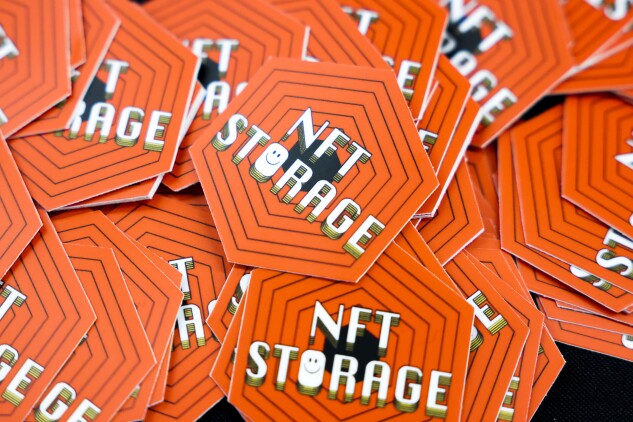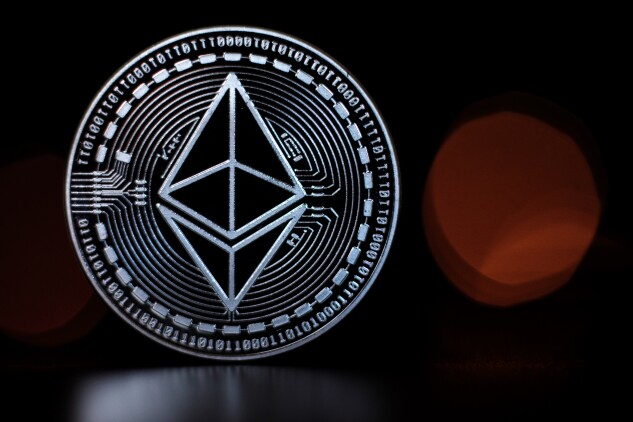The trials and tribulations of NFT valuation in the market
Digital tokens can represent any physical or digital entity in the ethereum blockchain, including virtual online game characters, fiat currency or company assets, among others. One of the first token standards that allowed developers to build token applications was the Ethereum Request for Comments 20 (ERC-20). In November 2015, ERC-20 introduced a robust standard for fungible tokens, where each token is the same as any other token. The standard implements an application programming interface (API) for tokens within smart contracts and provides various functions, including transferring tokens between accounts and obtaining the total token supply in the network.
Ethereum Request for Comments 721 (ERC-721) was proposed in January 2018. It became the core standard for unique, non-fungible tokens, where one token has a different value than another due to age, rarity, or multiple visual characteristics (e.g. eg the color of an NFT representing a virtual hat). The concept is at odds with fiat money, where one paper bill has exactly the same value as any other paper bill. Non-fungible tokens fall under the ERC-721 standard.
Most unique assets, such as rare game items, limited edition products, collectibles, and digital art, can usually be made into NFTs. By adding hash values, or fixed-length numeric values that uniquely identify data, to blockchain technology, it is possible to own and manage intangible assets in the digital domain that were not previously considered assets.
All of the aforementioned token standards were developed for the ethereumnotation blockchain, which remains the most popular blockchain where NFTs are created and exchanged. Ethereum was chosen because the largest decentralized exchange, Uniswap, is built on the ethereum blockchain. Since its inception in 2018, it has been the primary engine for decentralized finance (DeFi) trading. Unlike centralized exchanges such as Binance and Coinbase, trading on decentralized exchanges takes place entirely within the chain. As a result, every transaction is settled on ethereum when a Uniswap trade is made.
In addition, etherium can be wrapped and become a wrapped etherium, which represents a way to use it as an ERC-20 token. Because DeFi tokens are built on the ERC-20 standard, it is easy to exchange one token for another.
Overall, ethereum is a highly secure network and data architecture, where NFT projects are run as ERC-721 coins and gain enormous exposure to a large and growing market. NFTs are compatible with ethereum virtual machines, so ethereum wallets (such as Metamask and Ledger Nano) can support them.
NFTs have intrinsic value due to their digital properties and characteristics. For example, the CryptoPunks collection from Larva Labs contains 10,000 randomly generated characters with visual characteristics such as hair style and eye color. NFT blockchain games, such as Etheria and CryptoKitties, were introduced as early as 2015, where NFTs are created. In blockchain-based games, users can produce elements of the game themselves within the decentralized ecosystem, and individually created elements are applied to NFTs, enabling transactions between users.
Ethereum, Flow and Wax are the leading networks in the NFT market. All three platforms allow users to buy or sell NFTs. Some of these platforms also provide tools for users to issue NFTs and trade instantly. Meanwhile, Binance Smart Chain is attracting attention as a mainnet – an independent blockchain that operates its own network with its own technology and protocol – to be used frequently in the NFT market. If the growth in the deposit size of Binance Coin, which at one point was ranked fifth by market capitalization, is sustained, it could overtake ethereum in the NFT ecosystem based on its huge user power.
Challenges in valuing NFTs
One of the biggest challenges in valuing NFTs is gathering all the relevant data sets that need to be analyzed to estimate the token values. Several marketplaces expose certain data fields in different ways via APIs, so there is no standardization of the data format of NFT properties and properties. Additionally, many NFT marketplaces do not have a way to easily ingest NFT transaction data. They publish data on their websites, but the transaction data is not easily accessible.
Even when an API is available, it is not robust or easy to use. In many cases, developers must make an extra effort to ensure that the data is consistent and complete. Corporate support is not available and there is no centralized authority in the NFT market that provides complete and accurate data – unlike in the traditional financial investment market, where companies such as Bloomberg, Intercontinental Exchange, CME Group and S&P Global provide financial data.
The three main types of valuation methods are the income, market and cost methods. The market approach is the most appropriate for most NFTs because the financial calculations needed to capture the input data for the other two methods are missing. However, there are cases where NFTs have the potential to provide income. For example, NFT owners can rent out NFTs to players, where the platform allows the NFT owner to set the lending rate and duration; receive royalty fees after the NFTs they created are sold; stake NFTs, where the NFT owner receives rewards for linking the NFT to a platform or protocol; earn rewards for participating in the liquidity pool; and farm returns, where investors reinvest the earned rewards from one platform to another for additional returns.
In addition to valuing an NFT based on inherent digital properties it possesses and passive income it can generate, there are valuation considerations based on the broader marketability and recognition of a celebrity artist, which affects the value of their NFT over that of another unknown artist. These sources of influence on value can be highly speculative until the NFT is actually sold.
When implementing the market approach for NFTs, the value of a token is estimated based on comparable tokens by analyzing characteristics, properties, chain security, scarcity, issuance pace and other factors. However, there are additional challenges to the market approach, including:
- Transaction data is not easily extracted from virtually all NFT marketplaces.
- Several historical NFT transactions are extreme values - that is, three standard deviations from the average transaction.
- Celebrity-based influence on the NFT price is difficult to calculate.
- Many NFTs owned by investors are rare; there are very few hallmarks and their characteristics are not found in any other NFTs.
- Some NFT pools have very low transaction volume, so there is limited historical sales price data.
- NFT marketplaces represent NFT data differently, so there is no data format standardization.
- Some NFT transactions do not appear on NFT marketplaces and the corresponding blockchain must be crawled to retrieve this data.
- NFT’s values are also affected by which blockchain they live on.
- NFTs used in games contain several considerations that come into play when valuing them. In the Wolf game, for example, Wolf NFTs generate revenue from minting $WOOL coins.
What makes the valuation methods more volatile is that cryptocurrency is used to actively trade NFTs, so the value of the asset is determined by the value of the cryptocurrency at the time of the transaction.
There are different valuation considerations for the creator, purchasers and owners of NFTs at the beginning of their existence and on an ongoing basis, as these assets are included in the balance sheet and subject to audit of the financial statements. At the time of creation, the value of an NFT may depend on the characteristics of its creator and of the NFT itself, among other things.
Data and methods used to value NFTs
There are certainly challenges in extracting NFT characteristics and past transactions. Some ways to extract the right NFT data are to: develop software code that leverages existing APIs from NFT marketplaces and clean and transform the data; scrape publicly available data because it cannot be analyzed in its current form; and building blockchain crawlers that ingest and analyze NFT transaction data.
After the data is collected, it is usually stored in a relational or non-relational database or a data lake depending on the size and structure of the data sets. Depending on the size and form of data, different implementation methods are used that match the market approach.
If the size of the datasets is sufficient, the data can be divided into training, test and validation datasets through machine learning. The algorithm learns how different input fields affect the selling price and applies these learnings to the NFTs that need to be valued. Predictive accuracy is captured from the validation set, so that the methods are benchmarked, and the data scientist chooses the most accurate method. Alternatively, sampling theory can be used, and a valuation price can be estimated with a certain confidence interval.
Time series methods must be combined with the statistical techniques because the NFT value changes as a function of time. One of the most important calculations is to determine the similarity matrix of the NFT to be valued in order to understand which other NFTs (within the same collection or others) are similar to the token to be valued.
If the NFT has the potential to generate income (as in a game) in cryptocurrency, it must be taken into account by projecting future income based on past behavior in the blockchain game.
If limited transactional data is available, the statistical methods used can also be adjusted, using techniques that include, among others, resampling, data augmentation or transfer learning. By using methods that perform well for small data sets, a data scientist can generate more accurate estimates and reduce the bias in the results.
Conclusions
NFTs have become popular in recent years and it is important to be able to value them as accurately as possible. There are unique challenges in valuing NFTs, but statistics and machine learning can help provide the right solutions. Some of the main problems and the corresponding solutions are:
- Data extraction difficulties: Use custom software development and advanced data transformation methods.
- Absence of data standardization: Use computer technology methods that provide a uniform format after data is collected.
- Limited data for valuation purposes: Use appropriate statistical and machine learning methods suitable for small datasets.
- Transactions take place in cryptocurrency: Base forecasts on the same cryptocurrency, and conversion to fiat currency is handled separately.
- NFT Potential to Generate Income: Project future income based on past behavior.
- Factors unrelated to NFT properties such as celebrity artists, celebrity buyers and the blockchain used can affect the price: Quantify the effect of these factors on the NFT price based on past transactions.
This article does not necessarily reflect the opinion of The Bureau of National Affairs, Inc., the publisher of Bloomberg Law and Bloomberg Tax, or its owners.
Author information
Fotis Konstantinidis is CEO of Stout and leads its digital and data analytics practice. He started his career as a neuroscientist and held management positions delivering AI-driven products and services at McKinsey & Co. Inc., Accenture PLC, Visa Inc. and CO-OP Financial Services.
We’d love to hear your clever, original take: Write for us




